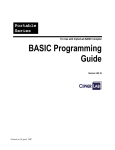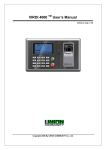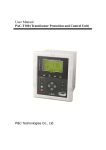Download FEA Newsletter August 2006 - Free of Papers from LS
Transcript
A U G U S T 2 0 0 6 I N F O R M AT I O N W W W . F E A I N F O R M A T I O N . C O M COV E R N e w w i t h t h e A M D Tu r b o C h a r g e P R ODUCT M S C M D o n S G I a n d A l t i x P e r f o r m a n c e a S y s t e m O p t e ro n ™ C o o l e r x S e r v e r s P r o c e s s o r D e s i g n C e n t e r SPOTLIGHT S o f t w a r e N a s t r a n I B M S T O R Y C o r p o r a t i o n M a r c R u n n i n g A c h i e v e s a n d H i g h S c a l a b i l i t y P R O D U C T S P O T L I G H T A R U P A n n o u n c e s B a s e d F E A M e s h i n g I N F O R M AT I O N I m a g e S o f t w a r e R E S O U R C E M A G A Z I N E FeaInformation.com 1 FEA Information Worldwide Participants Contents 01 02 03 05 12 13 19 21 22 23 24 25 31 32 34 35 36 38 39 40 Index FEA Announcements IBM –AMD: – New IBM System x Servers with the AMD Opteron™ Processor Turbo Charge a Cooler Design Center; Speeds Race Car Design and Production by Eighty Percent MSC Software – SGI: MD Nastran and Marc Running on SGI Altix Achieves High-Performance and Scalability Benchmarks CADFEM GmbH Publication: Drop Testing Simulation of a Cooker Including Foam Packaging and Pre-stressed Plastic Foil Wrapping Yahoo Yammerings ARUP: Arup announces Image Based Meshing Software FEA Weekly News Page – July Highlights Consulting and/or Distribution August Review LSTC Training Classes EVENTS LS-DYNA Resource Page Hardware & Computing and Communication Products Software Distributors Consulting and Engineering Services Educational & Contributing Participants China Participants Informational Websites 6th European LS-DYNA Conference SGI: Whatever Your Environment. There’s and SGI server that can keep your data moving Editor: Trent Eggleston Managing Editor: Marsha Victory Technical Editor: Art Shapiro Graphic Designer: Wayne L. Mindle Technical Writers: Dr. David Benson Uli Franz Dr. Ala Tabiei Suri Bala Technical Consultants: Steve Pilz Reza Sadeghi FeaInformation.com FEA Information Announcements In the August issue we have included many hyperlinks and with the September issue all links will be converted to hyperlinks. Special Announcement and article Arup announces Image Based Meshing Software Courtesy Notice: Call For Papers – Deadline September 18th, 2006 NAFEMS World Congress, Vancouver, Canada May 22 – 25, 2007 Sincerely, Trent Eggleston & Marsha Victory The content of this publication is deemed to be accurate and complete. However, FEA Information Inc. doesn’t guarantee or warranty accuracy or completeness of the material contained herein. All trademarks are the property of their respective owners. This publication is published for FEA Information Inc., copyright 2003. All rights reserved. Not to be reproduced in hardcopy or electronic copy. Note: All reprinted full articles, excerpts, notations, and other matter are reprinted with permission and full copyright remains with the original author or company designated in the copyright notice 2 FeaInformation.com 3 New IBM System x Servers with the AMD Opteron™ Processor Turbo Charge a Cooler Design Center; Speeds Race Car Design and Production by Eighty Percent Reprint from website AMD © Copyright 2006 Advanced Micro Devices, Inc. Red Bull's Christian Klien in qualifying at the 2005 United States Grand Prix Red Bull Racing Revs Formula One Design Engine with IBM and AMD Armonk, NY -- August 1, 2006 Press Release Conference NYC IBM announced that Red Bull Racing, a division of Red Bull® Energy Drink, has accelerated its Formula One design studio’s computing power with new IBM System x servers based on the AMD Opteron processor. The high performance computing cluster -- which will contain more than $3.5 million in new equipment -- will increase Red Bull Racing’s computing muscle and help the company further improve its race car design and speed car production by a factor of eighty percent. Red Bull Racing intends to use the new systems specifically for aerodynamic modeling. Aerodynamics is a critical factor in successfully designing a Formula 1 car, as they must be designed to maximize the ideal amount of downward force while minimizing wind resistance. The IBM solution will help Red Bull Racing quadruple its computing power to design more accurate models for virtual testing before starting costly, physical product development. “The competitive nature of the racing industry requires us to be on the cutting edge of technology so that we can speed past our competition in car design,” said Nathan Sykes, Computational Fluid Dynamics Manager, Red Bull Racing. “Every second counts – whether it’s in our design labs or on the racetrack. This new stateof-the-art computing platform built on IBM systems now enables us to streamline research and processes associated with simulation testing, and shorten the time it takes to bring our designs to life. IBM was the only vendor that could provide us with a complete solution to advance our business.” Red Bull Racing’s design models have seen an increase in size by twenty percent in the past year alone. Along with the need for a high performance computing cluster to crunch a growing number of calculations accurately, Red Bull Racing needs to continuously increase the speed in which the calculations are completed to maintain its lead against the competition. With IBM System x powered by the AMD Opteron processor, Red Bull Racing was able to leverage IBM Xcelerated Memory FeaInformation.com Technology to access data stored in memory more quickly. With IBM’s eXtended I/O, Red Bull Racing will also have the ability to add additional accelerator or graphics cards to the system. “We are very excited to work with Red Bull Racing and do our part to help advance the world of Formula 1,” said James Gargan, vice president, IBM System x. “The power and precision of our systems, coupled with our deep industry expertise makes us a perfect choice for Red Bull Racing as it positions itself as a world leader in Formula 1 racing.” Red Bull Racing built-out its existing high performance computing cluster from IBM with Dual-Core AMD Opteron processorbased System x servers. The entire platform is comprised of a mix of System e325m, e326, x3455, x3655, x3755 and 4 Intellistation workstations. IBM System Storage DS4800 with 100 terabytes of capacity and a General Parallel File System (GPFS) were also added to improve data storage and high speed file access to applications executed on multiple nodes of its computing cluster. “The high performance calculations and optimized software performance enabled by the AMD Opteron processor will help Red Bull Racing meet the incredibly competitive demands of Formula 1 racing,” said Kevin Knox, vice president, Worldwide Commercial Business, AMD. “IBM System x servers successfully marry AMD’s innovation at the processor level with IBM’s system-level expertise, providing customers who demand the most advanced technology with truly pioneering solutions.” For more information about Red Bull Racing, go to: Red Bull For more information about IBM, go to: IBM FeaInformation.com 5 MSC Software Corporation MD Nastran and Marc Running on SGI Altix Achieves High Performance and Scalability Benchmarks. MD Nastran, powerful simulation software commercially available today, combines such best-in-class technology platforms as Nastran, Marc, Dytran and LS-DYNA® To drive down costs, customers are reducing the number of expensive and time consuming physical tests by increasing the use of simulation. This is increasing the level of detail in finite element (FE) models, making them more and more complex. In turn, this is driven by customer demand for higher accuracy results and an expanding number of regulatory test requirements. However, the use of high fidelity FE models in the growing number of more complex simulations leads to longer simulation times. To reduce simulation time, organizations are accelerating the use of High Performance Computing (HPC). Benchmarks of such platforms as MSC.Software's MD Nastran and MSC.Marc with advanced Grid Computing technologies and the new SGI® Altix® 4000 HPC platform with dual-core Intel® Itanium® 2 processors demonstrate a crucial and beneficial impact on cost cutting, innovation and speed to market, leading to reduced warranty and field failure costs Less Cost - More Innovation Computer simulations cost far less and require much less time than physical tests. Additionally, simulations provide data not always available or practical with physical tests. For example, design of experiments (DOE), what-if studies and sensitivity studies are not always practical or affordable using physical tests. However, the use of simulation to reduce the number of physical tests before running a physical test for final validation allows a substantial reduction of time and costs. Furthermore, the time saved can be used for more "what-if" simulations, providing a better understanding of product performance issues, leading to greater innovation and even better products. Benchmarking HPC Performance and Scalability Today, HPC systems commonly consist of large SMP and blade systems; and computer clusters, with each computer considered a node and connected by LAN or a more specialized high speed system interconnect. Ideally, the more nodes (processors) the shorter the solution time. In exceptional situations, super linear scalability occurs - that is for double the number of processors the rate of solve time reduction is greater than double. In uncommon situations, scalability is linear - for double the number of processors the rate of solve time reduction is double. However, the most common scaling follows the law of diminishing returns - for double the number of processors the rate of solve time reduction is less than double and eventually additional processors provide little if any reduction in the solve time reduction rate. Various components of the simulation environment influence solution time, including the operating system, simulation software, processor and hardware architecture, and run time resource usage management tools. The result is a need for performance and scalability benchmarks providing a better understanding of various combinations of software and hardware platforms. In conjunction with FeaInformation.com MSC.Software, SGI has run a series of benchmarks achieved by using the powerful combination of MD Nastran and a SGI Altix 4700 Server built using dual-core Intel® Itanium® 2 processors. 6 may be solved using parallel computers. In addition to the DDM technology, MD Nastran has the most advanced Distributed Memory Parallel (DMP) technology for explicit nonlinear, NVH and multidisciplinary applications. SGI® Altix® 4700 Platform MD Nastran and Marc MD Nastran, simulation software commercially available today, combines such bestin-class technology platforms as Nastran, Marc, Dytran and LS-Dyna into one fully integrated (coupled) multidiscipline simulation solution for the enterprise. Through such industry-specific disciplines as implicit (long duration, small deformation) and explicit (crash or drop - short duration, large deformation) nonlinear, MD Nastran is able to support all the disciplines necessary to meet the needs of all manufacturers, i.e. results that very closely represent real world behavior. The parallel processing algorithm of MD Nastran implicit nonlinear technology utilizes the Domain Decomposition Method (DDM), delivering dramatic performance scalability. DDM is a methodology for dividing large simulations into smaller simulations. These usually artificial subdivisions of a large simulation allow the introduction of parallelism. For example, simulations intractable on a single computer The distinctive modular blade design of the SGI® Altix® 4700 platform is made of interchangeable compute, memory, I/O and special purpose blades for plug and solve configuration flexibility. SGI's novel blade-to-NUMAlink™ architecture enables mixing and matching eight standardized blade choices, allowing right-sizing the system for a given application. The compact Altix 4700 rack packages the blades for industry-leading performance density. Additionally, the Altix 4700 server with dual-core Intel® Itanium® 2 processors offers leading floating-point performance per watt of power consumption compared to other high-end platforms. Designed for future upgrade, expansion and integration of next-generation HPC technologies, the Altix 4700 platform is FeaInformation.com designed to be socket-compatible with upcoming single and dual-core Intel® Itanium® 2 processors, offering an easy upgrade or expansion of memory, I/O or visualization capabilities. With this flexible growth path, customers can tune system configurations for current and changing requirements easily and cost-effectively. Through peer I/O, the SGI Altix 4700 is the first SGI platform designed to support new computing paradigms, such as reconfigurable computing with field programmable gate arrays (FPGAs), which take over where Moore's Law ends. SGI's shared-memory NUMAflex™ architecture provides scalable system size for simplified programming, administration, workload management and very high sustained performance. With NUMAlink™ interconnect, up to 512 processors (1,024 cores) under one instance of Linux and as much as 60TB of globally addressable memory can be supported. NUMAlink leads the industry in interconnect bandwidth as well as latency for superior performance on cluster applications. Dual-Core Intel® Itanium® 2 Processors The SGI® Altix® 4700 platform used for the benchmarks that follow feature 1.6GHz dual-core Intel® Itanium® 2 processors with 24MB L3 caches (24MB cache is shared by two cores). These processors were designed for such dataintensive applications as HPC computing. The processors provide excellent properties for parallelism and scalability, which it so happens is exactly what high fidelity FEA models need when being solved for NVH, crash, nonlinear and multidiscipline simulations. 7 Three-Car Crash Benchmark When a van crashes into the rear end of a compact car, which in turn, crashes into a midsize car, the simulation is very complex. A high fidelity model is necessary for real life results and because it is a very complex simulation, it will be a very compute expensive simulation. This makes it a good example for simulation using HPC. The vehicle models were created by the National Crash Analysis Center (NCAC) and assembled into an input file by Mike Berger, consultant, Livermore Software Technology Corp (LSTC). The MD Nastran model was prepared by Casey Heydari, (Sr. Manager), MSC.Software Corporation. The model consists of 827,627 grid points and approximately 795,160 elements. FeaInformation.com 8 Three-Car Crash Benchmark Application MD Nastran Sol 700 (explicit nonlinear) Hardware SGI Altix 4700 Server Processor 1.6GHz dual-core Intel® Itanium® 2 processors with 24MB L3 cache (24MB cache is shared by two cores) Operating System Propack 4 SP3 Program Sizing and Requested Options Number of Nodes: 827627 Number of Solid Elements: Number of materials or property sets: Number of beam elements: 9,642 1,051 116 Number of shell elements: 785,021 Number Number Number Number Number Number Number Number Number Number 2,278 10,639 3 52 117 10 16 365 46 22 of of of of of of of of of of rigid body constraint sets: rigid body merge cards: rigid wall definitions: joint constraints: extra node blocks: spring-damper material types: discrete springs and dampers: lumped masses: load curves: accelerometers: FeaInformation.com 9 Scalability Linear SGI Altix 4700 Series Results Number of Dual-Core CPUs Elapsed Time (Seconds) Elapsed Time (Hours) 4 57,698 16 hours 1 minutes 38 seconds 8 29,429 8 hours 10 minutes 29 seconds 16 14,627 4 hours 3 minutes 47 seconds 32 7,902 2 hours 11 minutes 42 seconds Solid Cube Benchmark The model is a square cube consisting of 300,763 eight-node isoperimetric brick elements and 314,432-grid points. A 10-increment non-linear analysis with the MARC solver2 or MD Nastran Sol 600, which employs an iterative method with an incomplete Cholesky preconditioner, is done. The solver is sensitive to the amount of aggregated memory bandwidth the computer system can provide. This is where the bandwidth compute blade of the A4700 really shines. Application MSC.Marc or MD Nastran Sol 600 Hardware SGI Altix 4700 Server Processor 1.6GHz dual-core Intel® Itanium® 2 processors with 24MB L3 cache (24MB cache is shared by two cores) Operating System Propack 4 SP3 Program Sizing and Requested Options Element type requested Number of elements in mesh Number of nodes in mesh Max number of elements in any dist load list Maximum number of point loads Load correction flagged or set Number of lists of distributed loads Option for debug print out Values stored at all integration points Tape no. for input of coordinates + connectivity No. of different materials 1 max no of slopes Number of points on shell section 7 300,763 314,432 0 0 3 13 5 5 11 FeaInformation.com New style input format will be used Number of processors used Extended precision input is used Marc input version Suppress echo of list items Suppress echo of bc summary Suppress echo of NURBS data 10 1 11 SGI Altix 4700 Series Results Number of Dual-Core CPUs Wall Time CPU Time 1 4144.63 4088.99 4 CPU bandwidth compute blade performance 1229.84 1215.65 4 CPU density compute blade performance 1329.24 1310.17 8 CPU density compute blade performance 770.58 753.48 Bioengineering Bone Segment Simulation Benchmark The model is a bone joint segment consists of 68,401 grid points and 61,038 eight-node isoperimetric brick elements. A 10-increment non-linear static analysis with contact was run with the MSC.Marc parallel sparse direct solver. The parallel sparse direct solver is an openmp application, which is sensitive to the remote memory latency on a NUMA computer system. Therefore, the density compute blade of the SGI Altix4700, with its larger node and lower latency, is better suited for the task. Application MSC.Marc (implicit nonlinear) Hardware SGI Altix 4700 Server Processor 1.6GHz dual-core Intel® Itanium® 2 processors with 24MB L3 caches (24MB cache is shared by two cores) Operating System Propack 4 SP3 Model Sizing and Requested Options: Element type requested Number of elements in mesh Number of nodes in mesh Max number of elements in any dist load list Maximum number of point loads Large displacement analysis flagged Lad correction flagged or set 7 61,038 68,401 3 FeaInformation.com 11 Number of lists of distributed loads Values stored at all integration points Tape no. for input of coordinates + connectivity No. of different materials 2 max no of slopes Number of points on shell section Geometry updated after each load step Formulation for large strain plasticity New style input format will be used Number of processors used Assumed strain formulation is used Extended precision input is used Marc input version 3 5 5 11 11 SGI Altix 4700 Series Results Number of Dual-Core CPUs Wall Time CPU Time 1 9224.66 9200.24 4 CPU bandwidth compute blade performance 2800.69 N/A 4 CPU density compute blade performance 2694.10 N/A 8 CPU density compute blade performance 1708.97 N/A MD Nastran Linear Scalability with HPC SGI Altix 4700 and Dual-Core Intel® Itanium2® Processors Running MD Nastran with such advanced Grid Computing technologies as DDM and DDP on the SGI Altix 4700 platform with dual-core Intel® Itanium® 2 processor provides linear scalability in many applications and super linear scalability in others. The resulting reduction of FEA solution times with parallel processing is very cost efficient. Because the law of diminishing returns does not impact processing speed even up to 128 processors used in the benchmarks, customers can reduce capital investment costs by replacing slower, more expensive proprietary RISC-based mainframe platforms with the SGI Altix 4700 Server. The end result is to reduce solution time, hardware costs and allow the time saved to be invested in additional simulations, sensitivity studies and what-if studies to further improving products For Information Visit MSC Software FeaInformation.com 12 Publication Showcase: Paper is located online: FEA Publications sidebar link “Featured” Drop Testing Simulation of a Cooker Including Foam Packaging and Pre-stressed Plastic Foil Wrapping Dan Neumayer –Bosch-Siemens-Hausgeräte, Traunreut, Germany Madhukar Chatiri - CADFEM GmbH, Grafing b. Munich, Germany Mathias Höermann - CADFEM GmbH, Grafing b. Munich, Germany Abstract The present work deals with the numerical simulation of a drop test of a cooker including packaging foam and plastic foil wrapping. Additionally the pre-stressing of cooker and packaging due to thermal shrinkage of the plastic foil has been taken into account in the numerical investigation. For this, a thermal pre-stressing simulation of the plastic wrapping has been included before the actual drop test of the whole assembly has been conducted. The permanent deformations of the cooker nearby the impacted edge as well as the deformation of package foam in the vicinity of the impacted edge were the primary areas of interest and compared with experimental data. was used to perform the drop test simulation of the cooker as well as the thermal pre-stress simulation of the plastic wrapping. FeaInformation.com 13 Yahoo Group Yammerings - LS-DYNA Yahoo Group* * Please note the LS-DYNA Yahoo Group is neither owned or operated by LSTC and LSTC has no control over content. Jim Kennedy KBS2 Inc. [email protected] Len Schwer Schwer Engineering & Consulting Services [email protected] Jim Kennedy & Len Schwer plan to attend the 5th German LS-DYNA Forum, sponsored by DYNAmore, in Ulm Germany on 12 & 13 October. If you see us, please introduce yourself as a Yahoo Group participant, or Yammerings fan. Visit www.DYNAmore.de for more details. Len Schwer will be conducting an LS-DYNA ‘Discussion Group Forum’ during the 77th Shock & Vibration Symposium, October 29-November 3, 2006 at the Hyatt Regency Monterey in Monterey, CA. Visit www.saviac.org for more details. This installment of “Yahoo Yammerings” features five questions, with responses, from the past month of postings to the LS-DYNA Yahoo Group: 1. 2. 3. 4. 5. *CONSTRAINED_LAGRANGE_IN_SOLID question. For the Load Curves in MAT_24, what does LS-DYNA do? How to vary the SPH particle size? Question about modeling thin structures with solid elements. Beam Element Orientation Node Question. Question on *CONSTRAINED_LAGRANGE_IN_SOLID. I have come across a technical paper where someone has used *CONSTRAINED_LAGRANGE_IN_SOLID to couple Lagrangian re-bar inside a Lagrangian concrete structure. It appears that this approach has been taken in order to overcome meshing of the concrete interior to accommodate the internal reinforcements. It was my understanding that the *CONSTRAINED_LAGRANGE_... functionality was for coupling Lagrangian meshes to Eulerian or ALE type structures as a means of achieving load transfer. I did not think that it was applicable for Lagrange-to-Lagrange meshes. Can someone shed any light on this? Response by Conrad Izatt *CONSTRAINED_LAGRANGE_IN_SOLID can be used to ‘anchor’ the rebar (generally beam elements) inside the concrete (solid elements). Both concrete and rebar are Lagrangian elements. The nodes of the beam elements are constrained to remain in the same parametric positions within the solid elements. FeaInformation.com 14 The main advantage of this is that the meshes of the rebar and concrete do not have to coincide. However, this method does not account for bond slip between the rebar and concrete, i.e. it is a fixed connection. Response by Len Schwer I too read Akram Abu-Odeh's paper “Application of New Concrete Model to Roadside Safety Barriers” from the recent 9th International LS-DYNA User Conference. I talked with Akram briefly about this, as I too was amazed at this inventive use of *CONSTRAINED_LAGRANGE_IN_SOLID, so I suggest you try this technique and report back. Follow-up Response by Akram Abu-Odeh I may add that the user should be careful about the total mass when there are extensive re-bars in a structure. If that is the case, the user might want to reduce the mass density of the steel and/or concrete to get the total mass right if the inertial effects of the structure have significance for a specific solution. Follow-up Response by Jim Kennedy The following paragraph was taken from (an example also appears to be available): http://www.dynasupport.com/Support/howto/concrete.models Materials 16, 72, 96, and 84 include the option of considering reinforcement (rebar) in a smeared fashion. Alternately, reinforcement can be modeled in a discrete manner using beam elements. These reinforcing beams may be merged to the solid concrete elements (shared nodes), or may be tied to the concrete elements using 1-D contact (which can account for bond slip), or may be coupled to the concrete elements via *CONSTRAINED_LAGRANGE_IN_SOLID (CTYPE=2). The last method removes the burden of having to align the beam nodes to the solid element nodes, however, beware the constraint of the rebar to the concrete may conflict with and disrupt other constraints such as symmetry boundary conditions. An example of rebar coupled to concrete is in available or request as newhalf.k. There is some discussion in the following report: http://batchelor.uc3m.es/expro/D24.pdf Remark 2, on page 5.52 of the LS-DYNA Version 970 User’s Manual, states that the option may also be used to model rebar in concrete or tire cords in rubber. It would appear (guessing) that the nodal representation of the rebar interfacing with the concrete segments lends itself to using the algorithms of the CONSTRAINED_LAGRANGE_IN_SOLID feature. FeaInformation.com 15 For the Load Curves in MAT_24, what does LS-DYNA do? For values of strain beyond the defined stress-strain values in the DEFINE_CURVE for MAT_24, what does LS-DYNA do? Does it extrapolate based on the last 2 points or does it (as say my colleague) the strain increases without any increase in stress? Response by Conrad Izatt I believe that, in general, for curves relating to material data, e.g. stress-strain curves, LSDYNA will extrapolate from the last two points. This is why it is important that the last two points do not have a slope that will produce an unrealistic behavior or introduce numerical instability. However, I also know that this does not apply to data input as thermal parameters, e.g. yield stress vs. temperature. In these cases, LS-DYNA will not extrapolate and an error will occur if the temperature goes outside the range supplied. Therefore, the temperature range defined must cover the entire spectrum of temperatures seen by that material during the analysis. For curves relating to loading (nodal loads, element pressures, gravity etc.), in general, LSDYNA will reduce the value of the function to zero once the end point on the curve has been passed. So for loading curves, it is important that the curve covers the full period of the analysis. Follow-up Response by Len Schwer Conrad provided a detailed and helpful answer. But the bottom line is the USER needs to determine what happens when the limits of a *Define_Curve are exceeded; this can often be accomplished via a single element simulation. What LS-DYNA does after the limits of a *Define_Curve are exceeded may be either correct/incorrect depending on what the user is try to accomplish with the model. How can the SPH particle size be varied? How can we vary the particle size in SPH. I want to use smaller size particles in the corners where the stress might be high and larger size particles where the stress value is low. Response by Jim Kennedy From my limited use of the SPH feature, I do not think you want to do this without some extensive testing/validation of your meshing. Statements I have read from an early paper (links below) appear to not recommend such, “A proper SPH mesh must satisfy the following conditions: it must be regular as possible and must not contain large discrepancies of the mass of particles.” FeaInformation.com 16 http://www.dynalook.com/documents/Feainformation/nov_2001.pdf “Because of the lack of a numerical grid, the SPH processor requires some conditions in setting the initial particle mass and coordinates. The particle mesh needs to be enough regular. As a consequence, the particles of a same material, which have the same initial density, need to have the same volume. To preserve this, they need to be distributed on a uniform mesh.” http://www.dynalook.com/documents/6th_International_ls-dyna/session7-3.pdf This is my present knowledge; however, there always is the possibility that something new has been recently implemented, that I am not aware of, to allow more flexibility in the SPH use. Response by Len Schwer SPH particles do not have a ‘size,’ rather they have a ‘smoothing length’ or sphere of influence over which the field variables (displacement/strain/stress) are interpolated. Increasing the smoothing length with improve the interpolation by including more particleto-particle interactions, and increase the CPU cost. You can also increase the number of particles in a region of the mesh and improve the interpolation. Question about modeling thin structures with solid elements. I am modeling a thin structure with both shell elements and solid elements. The thin structure is subject to a static bending load. The geometry of the structure is quite complicated. The solid element model has two layers of 8-node hex elements. The results between the shell model and solid element model are quite different (about 30%). I cannot increase the layer of solid elements because of long run times. My question: are two layers of solid elements enough to capture bending behavior of a thin structure? The mesh is quite fine in both shell and solid element. Response by Jim Kennedy I believe the usual guideline for most constant stress solid element models, to capture bending properly, is 5 elements in the thickness direction. At least, this is my guideline. Thin structures are usually best modeled with shell elements. Follow-up Response by Len Schwer I think Jim Kennedy’s guideline is appropriate for models that include plasticity, which it the typical case for LS-DYNA models. For elastic bending, two elements (integration points) through the thickness is the minimum number. For plastic bending three elements (integration points) through the thickness are the minimum. FeaInformation.com 17 For your problem, consider increasing the number of integration points in the solids via ELFORM=2 fully integrated selected/reduced. Also, consider using the thick-shell solid element *SECTION_TSHELL which has worked well for me in the past. Finally, you answered your own question, when you stated the results are about 30% different when two layers of solids are used. Beam Element Orientation Node Question. Hello I'm currently modeling a reinforced concrete column subjected to blast load and decided to use beam elements to model the reinforcement and stirrups. However when I run the solver it returns an error message that I need to define the orientation node even when I use Type 2 beam elements. Because my model is quite large, it will be tedious to define an unique orientation node for each beam element. Can someone please give advice on how to overcome this problem, i.e. how can I use beam elements but not defining, or just defining orientation node/vector once as reference for all beam elements? Response by Conrad Izatt The Type 2 beam (Hughes-Liu) requires a third (orientation) node since the beam crosssection does not have to be circular. The section could be rectangular, in which case, LSDYNA would need to know which directions were the major and minor axes. I do not believe it is possible to use the Type 2 beam without an orientation node. Beam elements are allowed to share a third node. Since I presume that all of your beam elements are circular and therefore the orientations are irrelevant, you could use the same orientation node for all of the beam elements (as long as it doesn't line up with the 2 nodes of any of the beam elements). However, this is not what I would generally recommend. If all of the beam elements have different orientations, then looking at the shear forces and bending moments about the local s-or-t axis will give results in all different directions. This could be countered by using an orientation node that is far away from the model. This way, the beam orientations will only be slightly different. LS-DYNA only uses the third node to set the beam section orientation at the beginning of the analysis. Once the analysis is going, the beam orientation is determined by the nodal rotations. Many post-processors are unable to track the current beam orientation and continue to use the position of the third node, which is not correct (although it may be approximately correct depending on how much the beam orientation has changed and how much the third node has moved). More generally, I would recommend that all beam elements should have unique third nodes and that the NREFUP parameter on *CONTROL_OUTPUT is set to 1. This means that the current orientation of the beam element can be tracked in the post-processor because the co-ordinates of the third node are updated according to the current beam orientation. FeaInformation.com 18 Response by Amlanjyoti Barman 1. Select all the beams 2. Go to Beam Panel in HM (button is on the left side) 3. Check the UPDATE radio button. 4. Instead of direction nodes, Please do this ---> Define x comp=5.7e-4, y=-5.7e-4, z=5.7e-4. 5. Click on UPDATE button to update the direction with above values. (button is on the right hand side) 6. Now run the model. Response by Bob Browning According to the User’s Manual, N3 is required for all beam sections except Types 3, 6, 7, 8, and 9 and it is optional for these. Therefore you have to define this node so that LSDYNA knows the orientation of the cross-section. If your reinforcement is circular, as I assume it is, then the orientation is not critical but still needed for the problem specification. You can create a single node to use as the reference node for each element, but I believe that this only works if you are not using the coordinate update option. Check out Figure 12.1 under the *Element_Beam description in the User’s Manual for the description of this. Apparently you can also use the ORIENTATION option, but I have never dealt with this before. LS-DYNA Yahoo Groups There are over 1870 subscribers from all over the world, and this list seems to grow by a hundred new subscribers ever few months; no small testament to the rapidly growing popularity of LS-DYNA. The group currently averages about 250 message per month, i.e. about 10 message per day. You can subscribe to the group by sending an email request to [email protected] or by visiting the Yahoo Groups web site http://groups.yahoo.com Generally, the quickest/best responses are to those questions posed with the most specifics. General questions such as “How do I use XXX feature?” either go unanswered, or are answered by Jim Kennedy with links to appropriate references in the growing LS-DYNA related literature, e.g. see the archive of LS-DYNA Conference proceedings at www.dynalook.com FeaInformation.com 19 ARUP Announces Image Based Meshing Software © Copyright Arup, 2006 Arup are pleased to announce the release of a new suite of software for image based meshing, developed by Simpleware Ltd at the University of Exeter. Arup are supporting the development of this software and distributing it. Three dimensional replicas 3D imaging data Simpleware provides what is effectively a 3D photocopier: three dimensional replicas can be generated automatically based on scans. In parallel, computer simulations can be used to assess the suitability or performance of objects in operation. Simpleware's technology has opened up FEA and RP manufacturing to a variety of applications and research fields including: ScanIP is used to import 3D imaging data from MRI, CT, Micro CT and Ultrasound scans. It provides a series of image processing and segmentation tools which allow the user to define areas of interest in the image based on grey scale values. • • • • • • • • • Industrial reverse engineering Research in materials and composites Non-destructive evaluation (NDE) Biomechanical Research Implant design and manufacturing Surgery simulation and planning Forensics Biomimicry Archaeology 1 Scanning 2 Image Processing Smoothing Algorithms The smoothing algorithms used by ScanIP are volume, topology and geometry preserving. This ensures the accuracy of both the generated surface reconstructions and mesh models is based on image accuracy alone. The segmented areas can then be exported as a 3D stereo lithography file or exported into +ScanFE for meshing. The stereo lithography files can either be used directly for producing rapid prototype parts or imported into CAD software. 4 FE/CFD, RP &CAD Model 3 Meshing FeaInformation.com One Step Operation In a simple one step operation +ScanFE generates the mesh and material properties for the solid parts created in ScanIP. The material properties can be derived from the greyscale values in the image. An LS-DYNA keyword file can be exported from +ScanFE into Oasys PRIMER, where 20 contacts, boundary conditions and loads can be applied. Information To find out more about Simpleware and Oasys Software please contact Brian Walker of Arup. [email protected] tel: + 44 (0) 121 213 3317 FeaInformation.com 21 Previous Month - July Weekly News Page Highlights Review Complete Product/Service Information can be found on company websites. Information is copyright to the respective listed companies. NEC Rack-mountable servers operated as Linux Clusters have gained considerable recognition as working tools for scientific and engineering calculations. Whenever the software allows to distribute the calculation over several nodes these Linux Clusters offer tremendous compute power at a very competitive price/performance point. ESI GROUP EASi-CRASH DYNA is an integrated package for crash simulation which covers the CAE-process from start to finish. It achieves this by integrating all aspects of model building, dataset preparation, result evaluation and design comparisons. IBM IBM Deep Computing Visualization provides a scalable, collaborative, middleware infrastructure to help support and enhance the graphics functions of OpenGL software applications. A Deep Computing Visualization implementation is economical and highly adaptable solution designed with a commitment to interoperability based on open standards. QLogic InfiniPath InfiniBand HCAs smoke the competition with the industry's highest message rate. Combined with the lowest MPI latency and highest effective bandwidth, this enables MPI and TCP applications to scale to thousands of nodes with unprecedented price-performance. Now, we bring you InfiniPath InfiniBand HCAs that set new performance and scalability records on nearly every HPC application. SGI Altix XE offers superior performance and energy efficiency at a breakthrough price point. The combination of the advanced Intel® Dual-Core Xeon® processor architecture delivered in a fully factory integrated cluster solution, backed by SGI's industry-leading service and support provides customers with exceptional value in the SGI Altix XE platform. ANSYS ANSYS Workbench is the integration tool for our advanced physics capabilities that enable you to model all of your applications from very simple to very complex. The integration of these, and your own, solver technologies can take weeks out of your CAE process by eliminating manual file transfer, result translation, and reanalysis time. HP Powered by next-generation Intel® Itanium® 2 processors, the HP Integrity Superdome delivers the flexible capacity required to get the work done. The Integrity Superdome with the new sx2000 chipset also offers scalability to 64 Itanium 2 9M processors in a single serverand you can scale out in a cost-effective clustered environment to thousands of processors. FeaInformation.com 22 August Consulting and/or Distributing Companies Websites Contain Complete Company Information MFAC A full-service supplier to the metal forming industry, offering consulting services, software sales, training and support. Regularly scheduled classes on the use of LS-DYNA for sheet metal forming are available. LEAP With unique expertise in the fields of product design, manufacturing, simulation and testing LEAP brings optimum solutions using the world's leading CAD and CAE tools. Expertise in advanced analysis software packages such as ANSYS, and LS-DYNA. SE&CS Engineering services to Government and commercial clients. Services include the application, and development, of computational mechanics techniques with specializations in nonlinear transient phenomena and constitutive modeling. With a specialization in the application of the LSTC code LS-DYNA Predictive Engineering Predictive Engineering is a mechanical engineering consulting company specializing in finite element analysis (FEA). Under this banner, a broad range of capabilities are brought to bear in developing predictive engineering models via expertise in thermal/fluids (CFdesign), drop-testing and impact analysis (LS-DYNA). Structure Incorporated: Structure is a company targeted expressly towards Advanced Analysis, Engineering, and Design. They support the aerospace and industries with expert consulting and contract engineering in the fields of fluiddynamics, structures, and advanced propulsion. Structure meets the definition of a small business as required for Federal Contracting purposes and particularly specializes in the expert application of NASTRAN and LS-DYNA FeaInformation.com 23 LSTC Training Classes – 2006 The California office training center accommodates 23 students. The Michigan office has capacity for 12 students. Classes are scheduled throughout the year at both locations. For the most current schedule visit www.lstc.com Onsite training is also available. Training Class US $ Livermore, CA Detroit, MI Advanced LS-DYNA for Impact Analysis $950 Advanced Options in LS-DYNA $750 ALE/Eulerian & Fluid/Structure Interaction in LS-DYNA $750 Concrete and Geomaterial Modeling with LS-DYNA $750 Oct 24-25 Contact in LS-DYNA $750 Sept. 12-13 Aug 15-16 Introduction to LS-DYNA $750 Aug. 01-04 Nov. 14-17 Oct 23-26 Dec. 11-14 Introduction to LS-OPT $750 Nov. 07-10 LS-DYNA Composite Materials $750 Sept. 14-15 LS-DYNA Implicit $750 LS-DYNA for Heat Transfer & Thermal-Stress Problems $500 Material Modeling Using LS-DYNA User Defined Options $750 MESH Free Methods in LS-DYNA (SPH and EFG) $750 Sept 05-06 Sept. 07-08 FeaInformation.com 24 EVENTS – 2006 If you want your event listed please send the information to: [email protected] Call For Papers – Deadline September 18th, 2006 NAFEMS World Congress, Vancouver, Canada May 22 – 25, 2007 www.nafems.org NAFEMS is an independent not-forprofit body with the sole aim of promoting the effective use of engineering simulation methods such as finite element analysis, multibody system dy- namics and computational fluid dynamics. Simulation is now established in many engineering companies as part of their product development process. Whilst the conference will cover many aspects of the use of simulation, a particular focus will be how the appropriate deployment of simulation can lead to a further competitive advantage through helping to stimulate innovation. Held at the Westin Bayshore Hotel, Vancouver, on May 22nd-25th 2007. 2006 Sept 19-20 JAPAN LS-DYNA Users Conference 2006 Tokyo, Japan Hosted by JRI Sept 25 11th Korea LS-DYNA Users Conference 2006 , Seoul, Korea Hosted by Theme Engineering Inc. Oct 12-13 LS-DYNA Users Meeting in Ulm. Hosted by DYNAmore Oct 25-27 2006 CADFEM Users Meeting International Congress on FEM Technology Stuttgart area - Germany Nov 14- 16 Aerospace Design Expo 06 Anaheim, CA - US May 28-29, 2007 6th European LS-DYNA Conference FeaInformation.com 25 LS-DYNA Resource Page Interface - Hardware - OS And General Information Participant Hardware/OS that run LS-DYNA (alphabetical order). LS-DYNA has been fully QA’d by Livermore Software Technology Corporation for All Hardware and OS listed below. TABLE 1: SMP TABLE 2: MPP Interconnect and MPI TABLE 1: SMP - Fully QA’d by LSTC AMD Opteron Linux FUJITSU Prime Power SUN OS 5.8 FUJITSU VPP Unix_System_V HP PA-8x00 HP-UX 11.11 and above HP IA-64 HP-UX 11.22 and above HP Opteron Linux CP4000/XC HP Alpha True 64 IBM Power 4/5 AIX 5.1, 5.2, 5.3 IBM Power 5 SUSE 9.0 INTEL IA32 Linux, Windows INTEL IA64 Linux INTEL Xeon EMT64 Linux NEC SX6 Super-UX SGI Mips IRIX 6.5 X SGI IA64 SUSE 9 with ProPack 4 Red Hat 3 with ProPack 3 FeaInformation.com 26 LS-DYNA Resource Page MPP Interconnect and MPI FEA Information Inc. Participant’s (alphabetical order) Fully QA’d by Livermore Software Technology Corporation TABLE 1: SMP - Fully QA’d by LSTC AMD Opteron Linux FUJITSU Prime Power SUN OS 5.8 FUJITSU VPP Unix_System_V HP PA-8x00 HP-UX 11.11 and above HP IA-64 HP-UX 11.22 and above HP Opteron Linux CP4000/XC HP Alpha True 64 IBM Power 4/5 AIX 5.1, 5.2, 5.3 IBM Power 5 SUSE 9.0 INTEL IA32 Linux, Windows INTEL IA64 Linux INTEL Xeon EMT64 Linux NEC SX6 Super-UX SGI Mips IRIX 6.5 X SGI IA64 SUSE 9 with ProPack 4 Red Hat 3 with ProPack 3 FeaInformation.com 27 TABLE 2: MPP Interconnect and MPI Vendor AMD Opteron O/S HPC Intereconnect MPI Software Linux InfiniBand (SilverStorm), MyriCom, QLogic InfiniPath LAM/MPI, MPICH, HP MPI, SCALI FUJITSU Prime SUN OS 5.8 Power FUJITSU VPP Unix_System_V HP PA8000 HPUX HPIA64 HPUX HP Alpha True 64 IBM Power 4/5 AIX 5.1, 5.2, 5.3 IBM Power 5 SUSE 9.0 INTEL IA32 Linux, Windows INTEL IA64 Linux INTEL Xeon EMT64 Linux NEC SX6 Super-UX SGI Mips IRIX 6.5 SGI IA64 SUSE 9 w/ProPack 4 NUMAlink, InfiniBand, (VolRedHat 3 w/ProPack taire) 3 LAM/MPI InfiniBand (Voltaire), MyriCom LAM/MPI, MPICH, HP MPI, SCALI LAM/MPI, MPICH, HP MPI InfiniBand (Topspin, Voltaire), MyriCom, QLogic InfiniPath LAM/MPI, MPICH, HP MPI, INTEL MPI, SCALI NUMAlink MPT MPT, Intel MPI, MPICH FeaInformation.com 28 LS-DYNA Resource Page - Participant Software Interfacing or Embedding LS-DYNA Each software program can interface to all, or a very specific and limited segment of the other software program. The following list are software programs interfacing to or having the LS-DYNA solver embedded within their product. For complete information on the software products visit the corporate website. ANSYS - ANSYS/LS-DYNA ANSYS/LS-DYNA - Built upon the successful ANSYS interface, ANSYS/LSDYNA is an integrated pre and postprocessor for the worlds most respected explicit dynamics solver, LS-DYNA. The combination makes it possible to solve combined explicit/implicit simulations in a very efficient manner, as well as perform extensive coupled simulations in Robust Design by using mature structural, thermal, electromagnetic and CFD technologies. AI*Environment: A high end pre and post processor for LS-DYNA, AI*Environment is a powerful tool for advanced modeling of complex structures found in automotive, aerospace, electronic and medical fields. Solid, Shell, Beam, Fluid and Electromagnetic meshing and mesh editing tools are included under a single interface, making AI*Environement highly capable, yet easy to use for advanced modeling needs. ETA – VPG Streamlined CAE software package provides an event-based simulation solution of nonlinear, dynamic problems. eta/VPG's single software package overcomes the limitations of existing CAE analysis methods. It is designed to analyze the behavior of mechanical and structural systems as simple as linkages, and as complex as full vehicles MSC.Software - MSC.Dytran LS-DYNA Tightly-integrated solution that combines MSC.Dytran's advanced fluid-structure interaction capabilities with LS-DYNA's high-performance structural DMP within a common simulation environment. Innovative explicit nonlinear technology enables extreme, short-duration dynamic events to be simulated for a variety of industrial and commercial applications on UNIX, Linux, and Windows platforms. Joint solution can also be used in conjunction with a full suite of Virtual Product Development tools via a flexible, cost-effective MSC.MasterKey License System. ETA – DYNAFORM Includes a complete CAD interface capable of importing, modeling and analyzing, any die design. Available for PC, LINUX and UNIX, DYNAFORM couples affordable software with today's high-end, low-cost hardware for a complete and affordable metal forming solution. Side Impact With Fuel Oil Inside FeaInformation.com 29 MSC.Software - MSC.Nastran/SOL 700 The MSC.NastranTM Explicit Nonlinear product module (SOL 700) provides MSC.Nastran users the ability access the explicit nonlinear structural simulation capabilities of the MSC.Dytran LS-DYNA solver using the MSC.Nastran Bulk Data input format. This product module offers unprecedented capabilities to analyze a variety of problems involving short duration, highly dynamic events with severe geometric and material nonlinearities. MSC.Nastran Explicit Nonlinear will allow users to work within one common modeling environment using the same Bulk Data interface. NVH, linear, and nonlinear models can be used for explicit applications such as crash, crush, and drop test simulations. This reduces the time required to build additional models for another analysis programs, lowers risk due to information transfer or translation issues, and eliminates the need for additional software training. MSC.Software – Gateway for LS-DYNA Gateway for LS-DYNA provides you with the ability to access basic LS-DYNA simulation capabilities in a fully integrated and generative way. Accessed via a specific Crash workbench on the GPS workspace, the application enhances CATIA V5 to allow finite element analysis models to be output to LS-DYNA and then results to be displayed back in CATIA. Gateway for LS-DYNA supports explicit nonlinear analysis such as crash, drop test, and rigid wall analysis. Gateway products provide CATIA V5 users with the ability to directly interface with their existing corporate simulation resources, and exchange and archive associated simulation data. FeaInformation.com 30 Oasys software for LS-DYNA Oasys software is custom-written for 100% compatibility with LS-DYNA. Oasys PRIMER offers model creation, editing and error removal, together with many specialist functions for rapid generation of error-free models. Oasys also offers post-processing software for in-depth analysis of results and automatic report generation. EASi-CRASH DYNA • EASi-CRASH DYNA is the first fully integrated environment for crashworthiness and occupant safety simulations with LSDYNA, and covers the complete CAEprocess from model building and dataset preparation to result evaluation and design comparisons. EASi-CRASH DYNA can be used for concept crash, FE crash and coupled rigid body/FE crash simulations in conjunction with MADYMO. EASi-CRASH DYNA’s main features include: • Support of all keywords of LS-DYNA 970/971 • Powerful mesh editing features, such as automesh and remesh • LS-DYNA/MADYMO coupling capabilities for pre- and post processing (support of MADYMO format till version 6.2.2) • Model Assembler for organizing the model through sub assembly/sub models and included files • • • • • • Enhanced Weld tools for manipulation of connections and Weld comparison Simple dummy positing and seat belt routing Pre and Post processing in same environment Superpose and merge multiple models Animation and plotting Process compatible Full capability to handle IGES, CATIA V4, CATIA V5, UG and NASTRAN files FeaInformation.com 31 Hardware - Computing - Communication Products www.amd.com www.hp.com www.fujitsu.com www.ibm.com/servers/deepcomputing www.intel.com www.nec.com www.sgi.com www.qlogic.com www.microsoft.com FeaInformation.com Software Distributors Alphabetical order by Country Australia Leading Engineering Analysis Providers www.leapaust.com.au Canada Metal Forming Analysis Corporation www.mfac.com China ANSYS China www.ansys.cn China Arup www.arup.com/eastasia/ China MSC. Software – China www.mscsoftware.com.cn Germany CAD-FEM www.cadfem.de Germany DynaMore www.dynamore.de India Altair Engineering India www.altair-india.com Italy Altair Engineering Italy www.altairtorino.it Italy Numerica SRL www.numerica-srl.it Japan Fujitsu Limited www.fujitsu.com Japan The Japan Research Institute www.jri.co.jp Japan CRC Solutions Corp. www.engineering-eye.com Korea Korean Simulation Technologies www.kostech.co.kr Korea Theme Engineering www.lsdyna.co.kr 32 FeaInformation.com 33 Software Distributors (cont.) Alphabetical order by Country Netherlands Infinite Simulation Systems B.V www.infinite.nl Russia Strela, LLC www.ls-dynarussia.com Sweden Engineering Research AB www.erab.se Taiwan Flotrend www.flotrend.com.tw USA Engineering Technology Associates www.eta.com USA Dynamax www.dynamax-inc.com USA Livermore Software Technology Corp. www.lstc.com UK Arup www.arup.com/dyna/ FeaInformation.com 34 Consulting and Engineering Services Alphabetical Order By Country Australia Manly, NSW www.leapaust.com.au Canada Kingston, Ontario www.mfac.com India Bangalore www.altair-india.com Italy Torino www.altairtorino.it Italy Firenze www.numerica-srl.it UK Solihull, West Midlands www.arup.com USA Austin, TX USA Windsor, CA www.schwer.net/SECS USA Corvallis, OR www.predictiveengineering.com USA Neenah, WI www.structuretechnology.com Leading Engineering Analysis Providers Greg Horner [email protected] 02 8966 7888 Metal Forming Analysis Corporation Chris Galbraith [email protected] (613) 547-5395 Altair Engineering India Nelson Dias [email protected] 91 (0)80 2658-8540 Altair Engineering Italy [email protected] Numerica SRL [email protected] 39 055 432010 Arup Brian Walker [email protected] 44 (0) 121 213 3317 KBEC L.C Khanh Bui [email protected] (512) 363-2739 SE&CS Len Schwer [email protected] (707) 837-0559 Predictive Engineering George Laird (1-800) 345-4671 [email protected] Structure Incorporated Todd L. Peters (920) 722 7060 [email protected] FeaInformation.com 35 Educational & Contributing Participants Alphabetical Order By Country China Dr. Quing Zhou Tsinghua University India Dr. Anindya Deb Indian Institute of Science Italy Professor Gennaro Monacelli Prode – Elasis & Univ. of Napoli, Frederico II Russia Dr. Alexey I. Borovkov St. Petersburg State Tech. University USA Dr. Ted Belytschko Northwestern University USA Dr. David Benson University of California – San Diego USA Dr. Bhavin V. Mehta Ohio University USA Dr. Taylan Altan The Ohio State U – ERC/NSM USA Dr. Ala Tabiei University of Cincinnati FeaInformation.com 36 FEA Information China Participants Software, Hardware, Training, Consulting, Services Kimbal Virdi Arup Tel: +86 21 5396 6633 China: LS-DYNA sales, Contact: [email protected] Website: www.arup.com/dyna support, training Ansys-China, Inc. Arup Beijing Yuntong Forever CPC. Co. Ltd. Tel: 86-10-84085558 Website: www.ansys.com.cn Contact: [email protected] Kimbal Virdi Tel: +86 21 5396 6633 Contact: [email protected] Website: www.arup.com/dyna Tel: +86-10-82561200/01/03 Website: http://cpc.ytforever.com Sole Distributor of LINUX NETWORX, INC. (USA) in China Contact: [email protected] Engineering Technology Associates (China) Inc. Martin Ma Tel: + 86-21-64385725 Contact: [email protected] Hewlett-Packard Asia Pacific Ltd. Jerry Huang Tel: +86-10-65645261 Contact: [email protected] IBM China MSC. Software Corp. Ms. Ling WANG Tel: +86-10-6539-1188 x4463 (T/L:901-4463) Website: http://www.ibm.com/cn/ Contact: [email protected] Tel: +86-10-6849-2777 Website: www.mscsoftware.com.cn Contact: [email protected] FeaInformation.com 37 FEA Information China Participants Software, Hardware, Training, Consulting, Services SGI China Carl Zhang Tel: +86 -10 - 65228868 Ext. 3362 Contact: [email protected] Tsinghua University Qing Zhou, PhD. - Professor Department of Automotive Engineering Beijing, 100084, China Zhongfang Information Technology Ltd Larry Liang Tel: +86-21-54973162 Website: http://www.cntech.com.cn Contact: [email protected] Zhong Guo ESI Co., Ltd Yang Xiaojum Phone: +86 (020) 8235 6272 Contact : Yang Xiaojun FeaInformation.com 38 Informational Websites The LSTC LS-DYNA Support site: www.dynasupport.com LSTC LS-DYNA Support Site www.dynasupport.com FEA Informationwebsites www.feainformation.com TopCrunch – Benchmarks www.topcrunch.org LS-DYNA Examples (more than 100 Examples) www.dynaexamples.com LS-DYNA Conference Site www.ls-dynaconferences.com LS-DYNA Publications to Download On Line www.dynalook.com LS-DYNA Publications www.feapublications.com LS-DYNA CADFEM Portal www.lsdyna-portal.com. FeaInformation.com 39 6th European LS-DYNA Conference May 28-29, 2007 www.erab.se/conference2007/ Engineering Research Nordic will be hosting the 6th European LS-DYNA Users' Conference held at Quality Hotel 11 in Gothenburg, Sweden, May 28-29 2007. The conference brings together LS-DYNA users, researchers and developers to discuss LS-DYNA simulations of complex mechanical problems. The conference also attracts a wide range of hardware and software companies wishing to showcase their special solutions when running LS-DYNA simulations. The conference will cover LS-DYNA applications – Among them will be: • • • • • • • • • • Aerospace, Automotive, Biomechanics, Civil Engineering, Impact and Drop Testing, Material Modeling, Metal Forming, Nuclear, Occupant Pedestrian Safety, Seismic Engineering and more. A software and hardware exhibition will be organized during the conference. Interested companies should contact Engineering Research Nordic. We are expecting delegates and presentations from all over the world to discuss problems facing the industry today and in the future. Dr. John Hallquist, will be a keynote speaker presenting new LS-DYNA features. Specifications for Paper Submissions • Paper length: 3.000 words maximum • Abstract deadline: January 26th, 2007 • Notification of acceptance: February 9th, 2007 • Final paper deadline: April 1st, 2007 For information on Paper Submissions, Exhibit Booth and/or Available Sponsorships Contact: • Dr. Marcus Redhe Engineering Research Nordic Brigadgatan 16 SE-581 31 Linkoping Sweden FeaInformation.com Whatever your environment, there’s an SGI server that can keep your data moving As workflows become more diverse, it’s critical that your server architecture is flexible enough to efficiently power a wide-range of applications. That’s why we’re expanding our innovative line of Linux® OS-based solutions to deliver rapid insights and maximize your investment – even in the most diverse environments. Introducing our new SGI Altix XE line of servers and clusters Cluster your power—and maximize value A fully integrated cluster solution based on the Intel® Dual-Core Xeon® 5100 processor architecture, the value-priced SGI Altix XE line makes expanding your capabilities easy and affordable. • Industry standard Linux supports a wide range of 32- and 64-bit applications • High-density clusters for unmatched energy and space efficiency • A choice of density-optimized or I/O-rich server options Custom-configured, factory-integrated clusters for flexible, easy deployment Introducing our latest SGI Altix 450 servers Manage every workload—and scale with ease Built on the advanced Intel® Itanium® 2 processor architecture, SGI’s Altix server line speeds time to insight with powerful performance for even the most complex workloads. • Uncompromised Linux performance and scalability • Leading energy and space efficiency for high-demand applications • Proven reliability, availability and serviceability • Low cost of development, administration and management Get our new white paper to learn more. “A Multi-Workflow Architecture for High-Performance Computing.” 40









































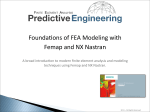





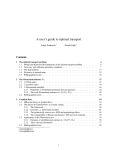

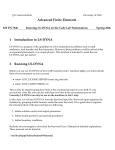
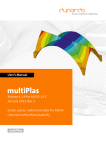
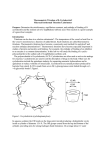
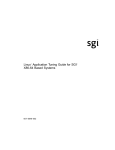
![[Proxyview]User`s Manual (5.1.4.0)](http://vs1.manualzilla.com/store/data/005658349_1-e7f841297d622d23913e7f3fcabf599d-150x150.png)


